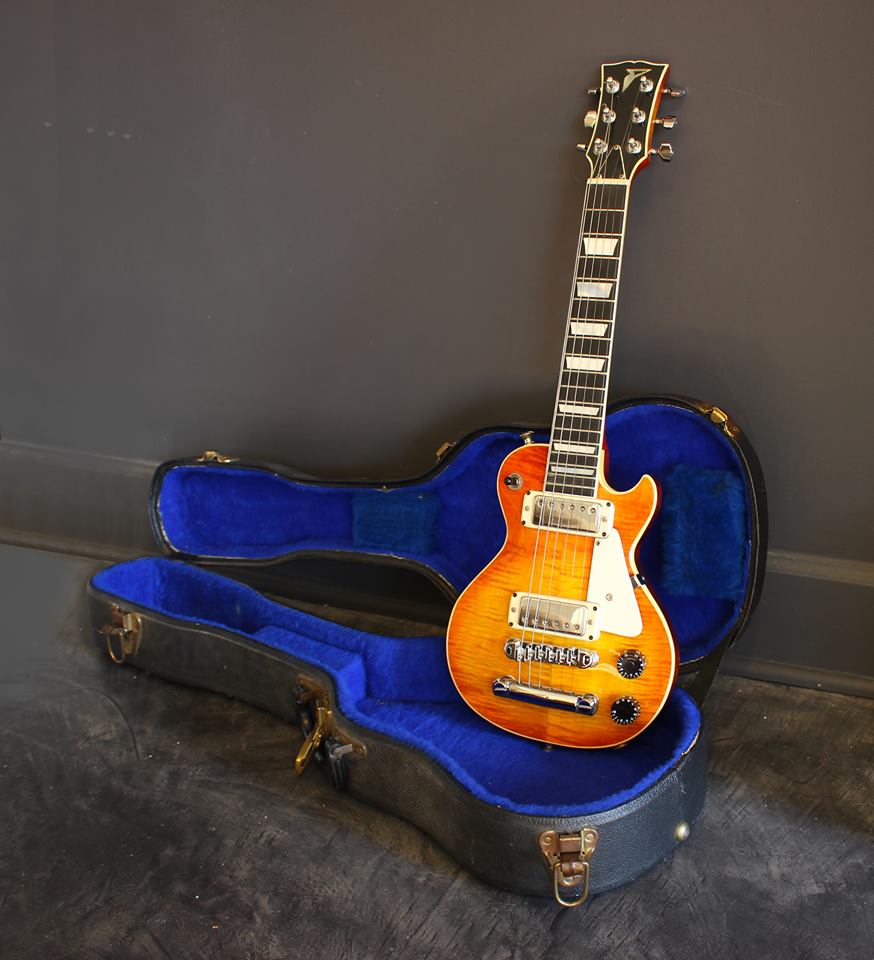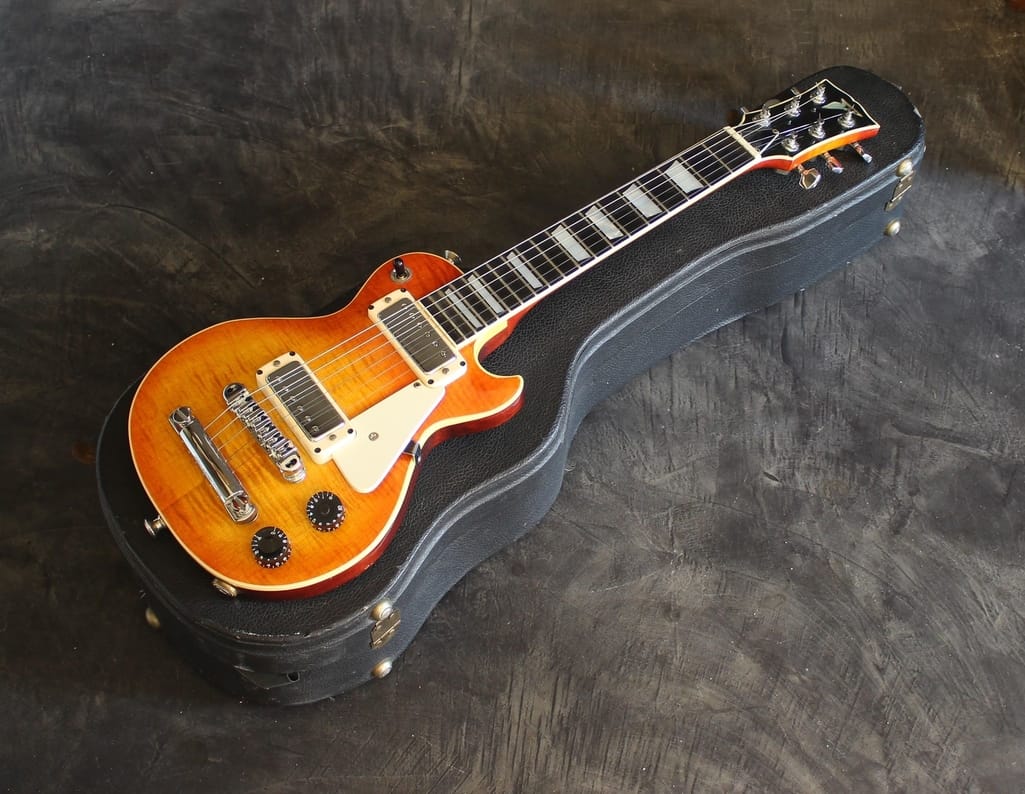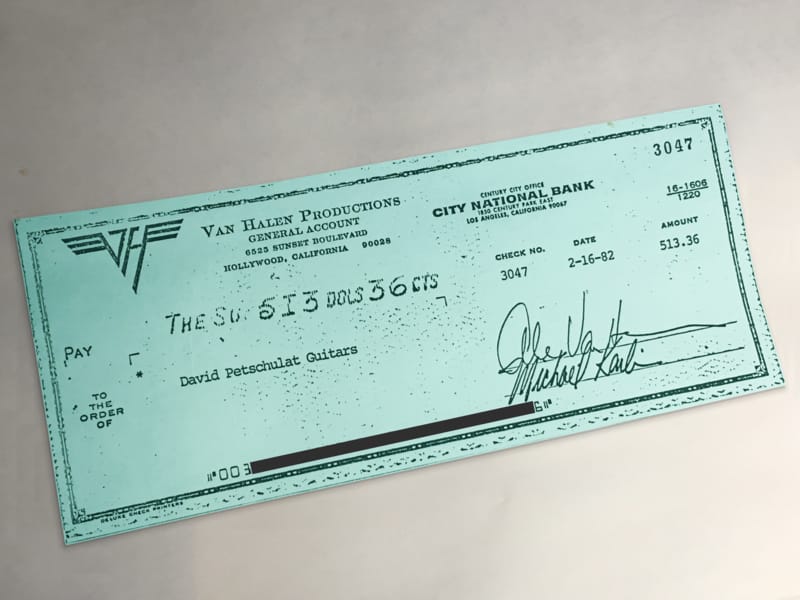It’s no doubt amps are smaller and getting more compact and most of the pedals have already hit the shrink ray, but lately, guitars seem to be jumping on the little bandwagon as well...
Welcome to the tiny revolution!

Often regarded as musical novelties, fundamentally flawed travel guitars, or just simply low-quality entry-level instruments made for beginners, smaller axes have long suffered a slightly bad rap. But all of that is changing as a new generation of size-centric players have begun embracing ¾ size bodies and in some cases, shorter scale necks. Make no mistake about it, smaller guitars are back! So how did it all start?
From Small Beginnings...
Going all the way back to the late 1800’s, Parlor-style acoustic guitars had been lovingly embraced by Folk and Blues players that preferred the bright, focused attack of a smaller body guitar and the portability that came along with it. In fact, as the legend goes, Robert Johnson had his well-worn L1 with him at the mythical Crossroads in Mississippi when he made the infamous deal with you-know-who that would put him and his trusty travel guitar in the history books forever. Years later, ensemble players would come to favor the Parlor’s larger-bodied brethren for sheer volume as enormous swing music groups ruled the dance halls and guitar amps had yet to hit the scene. Once volume and power became necessary to compete with the wall of instrumentation found in popular Big Bands, smaller guitar bodies were summarily dissed and dismissed as bigger, more resonant guitars became the new standard with their increased volume and incomparable tone that made for this new American portmanteau of blues, traditional spirituals, and superlative musicality simply known as “Jazz.”
In the span of a decade, guitar bodies would morph into giant Jazz boxes with electrical transducers -or pickups- that sent amplified signals out to little speaker boxes that were initially made for boosting the volume signal of electric organs. A bit of spark, a whiff of ozone and behold! The modern-day electric guitar was now alive and kicking - er, rocking as it were. Early musical companies like Vox and Gibson made some of the newest low-wattage amps that allowed early electric guitar players to actually hear themselves for the first time amongst the din of up to 20+(!) members blasting swing music into the atmosphere, and propelled the guitar back towards the front of the stage where it would stay for the next 60 years or so.
...Come Great Things.
They say if you remember the 80’s you weren't there, but even if you happen to have missed out on this era of ear-splitting fretboard histrionics, the sound and style can still be felt and seen in guitar designs to this very day. In fact, the defining decade of colorfully coiffed rock stars put forth the notion that different, wild, and eccentric was not only acceptable, but encouraged! Now at this point in time, you had three distinct camps in rock guitar design; LP’s, Strat’s, and well, guitars that fit somewhere in between. And with that bold spirit, guitar builders soon began to take the traditional electric guitar style into entirely new dimensions by exploring interesting design concepts that deviated from the standards that dominated for years and years. Luthiers began to experiment with alternative woods, unconventional construction materials, and even the size of the body and neck itself. A new age of luthiery had begun and makers were limited only by their own imaginations to craft something as unique as the player that was holding it. Weird and wild became the new tried and true and needless to say, the boundaries of physics, and sometimes even the treasured heritage of predictability were pushed as far away from center as possible. So when Eddie Van Halen jumped on stage in the early 80’s with a pocket sized LP copy, heads were turned and jaws hit the floor. This was no toy he was playing with here - this was the greatest living rock guitar player absolutely shredding with a guitar no bigger than a loaf of bread. Fans and six string slingers worldwide collectively asked “What is it?” “Who made it??” and ultimately “WHERE CAN I GET ONE!?”
We recently caught up with the legendary David Petschulat, builder of EVH’s famous “Little Guitar” that was used in live shows from 1982 upwards to ask him about the iconically diminutive instrument and the story behind how it ended up in Eddie’s extremely capable hands...
1) What or who inspired you to craft a smaller size guitar?
My mentor and friend, Danny Ferrington, let me work close at his side when he was making what I consider the first little guitars that mattered in the rock and roll world. Danny has made countless beautiful full-size guitars for countless big-name artists, and somewhere in the mix he made a few adorable little acoustic 6-strings, which he specifically designed to fit in the Martin Tiple cases. (We built guitars and didn't want to have to build cases!) I asked Danny if he'd mind me borrowing that lick and taking it in my own direction by making some mini electrics - and of course he said "sure! do it, Dave!" Danny is incredibly generous in that way. I guess if you're as talented as he is you really don't worry about having turf to protect. Danny's great.
So I made a mini Les Paul and immediately sold a pair to Nancy Wilson and Howard Leese of Heart. I made one for Jackson Browne which Jackson gave back to me recently, and I plan to use it as a template for a reissue run sometime soon. I was making full-size guitars at the time, but there were a few other mini's in there: a mini 335 and a mini Tele 6-string. And of course, the pair of Les Pauls for Eddie.
That's how I got into mini's, and I got the same opportunity to pass the torch a year or two later. I'd become very good friends with Joe Glaser, and Joe took an interest in making a little electric Tele mandolin. Joe asked me if I'd mind him borrowing the lick, and I said "Of course not. Go for it!" I think Joe made a handful of them.
Nashville's where this all took place; and it was quite a thriving scene in the 1980’s, as it is today.
2) How did EVH discover your work?
Normally I'd take whatever interesting thing I had at the time down to the concert venue mid afternoon, and sniff out the guitar tech to see if he'd let me show to the artist. Van Halen's security was too tight to do that, which really bummed me out. I just couldn't accept defeat without Eddie even seeing what I had, so I took off on foot towards the major downtown hotels. A guy’s got to sleep, right? In less than five minutes I'm walking down the street and spot Eddie, Alex, and one of their crew sitting on some steps waiting for a ride. I walked up quickly, opening the case before I arrived to make sure I didn't get shoo’d away before he saw it. He saw it, and the vibe of the day changed quickly.
3) Do you recall his initial impressions of the guitar?
I think he said "Whoa, a f***ing little Les Paul!" He definitely was smiling. He was tickled. He loved it, and immediately took it out the case and tried it. He hustled us all to venue to run it through his rig, and there backstage, he bought that one, and contracted me to make him another one. Manager brings in a briefcase full of cash - literally full - and pays for the bulk of it in cash. Immediately his tech removes my strap buttons and whacks in big eye-bolts with a mallet to go with Ed’s low-tech “Tractor Supply Store” looking strap hooks. I could hear the wood crackling and little chips of nitrocellulose snapping off as he cranked the eye-bolts in using a big screwdriver like it was a tire iron. That was a quick lesson in Ed’s favoring function over form.
I should mention, the first of Eddie’s LP’s (#13) contained a small battery operated practice amp & speaker - it was on when the volume knob was pulled, and bypassed when the knob was pushed down. Valerie Bertinelli, Eddie’s wife at the time, said he loved it and “practically took it in the shower with him.” I think that was the only mini I made with an amp & speaker in it. That’s going to be a key feature of the reissue line I’m thinking of doing. It’s a lot of fun to tote around a small electric guitar that you can hear when you play it. (Duh.)
4) Can you share which woods, fret sizes, and pickups you used?
Standard Les Paul stuff: maple tops and necks, and mahogany backs.
The one I’d brought that day (#13) had a bird’s eye maple top in a very faded cherry sunburst, my version of mini humbuckers, and the headstock logo was my “Flying P” logo - spread pointy wings with a big rounded “P” in the center. The second one (#16) per Ed’s request was made considerably thicker and had full-sized humbuckers. It was dark wine red, and he had me do the Van Halen logo in the headstock.
I think Eddie liked first one with the mini humbuckers the most, but I’ve seen stage photos of him using each of them.
5) Do you recall the nut width and scale length?
Not exactly, but my intent was to make them as normal as possible without looking freakish.
6) Why did you go with the LP shape?
Just as it was with Danny Ferrington and his mini acoustics, I chose the Les Paul because I figured it’s proportions were well suited to the Martin Tiple case.
7) What was the neck profile like?
It would have been what I myself like, which tends to be a not-too-fat rounded “D”.
8) Can you share with us how much Eddie paid for it?
Sure. Records I still have show that in the summer of '81 he paid $1,100 for the first one (serial number #13) with the sunburst finish and the practice amp built into it, and $900 for the second one (serial number #16) with the wine red finish and larger humbuckers. Some early VH book which was poorly researched said I gave them to him - not true. My old receipts show he paid for both guitars, some repair work (to that monsterous black/yellow doubleneck), and his very first locking+fine tuning vibrato which I designed (that’s another story!).
9) You hold several patents for guitar technology. Can you tell us what you're most proud of?
Honorable mention would be the fret patent with Joe Glaser - long before the Plek machine came along, we’d patented an adjustable fret system that we just couldn’t make work the way we wanted it to. We let it lapse.
The patent I dig is the latest one for Rivet Pickups. In a nutshell, Rivet pickups do a kind of “passive modeling” by combining some modified coils in fresh ways to enhance tone. They boost the low end when in single coil mode, and they rebalance the highs when in humbucker mode, so your single coils are never too thin, and your humbuckers are never too dull or muddy. I’m currently working on better audio examples to put up on the rivetpickups.com website.
10) What are you building or teaching these days? Anything exciting that you're working on?
I am totally immersed in guitar pickup design and loving it, and I focus on new ideas more so than vintage knockoffs of old stuff. More info on that at: http://www.rivetpickups.com
I plan to do a reissue of one of Eddie’s little guitars, I think. Any readers interested in getting added to a contact list for ongoing info about that can subscribe at this link: https://mailchi.mp/b808ba030a55/little13
I also teach “Guitar Mechanics” at Belmont University which is a total hoot. A very fun class, and I think reasonably deep.
These days, modern builders are starting to build the wheels on the modern little guitar bandwagon, and companies like Halo, Warmoth and Ibanez all offer professional quality ¾ (or even 7/8) size guitars with likely more to follow as the demand steadily increases. Many players love the smaller style for looks and claim that modest body shapes allow for a more intimate approach to performance as the guitar body itself has considerably more surface contact with your abdomen or chest which allows for more control over the instrument as a result. Everyone has their own preferences, but most players would agree: less can truly be more! And anything that increases the joy of playing, enhances a connection to your guitar physically, emotionally or otherwise, is never a small feat!
For more information or to place an order for a Halo 3/4 size guitar, email us at sales@haloguitars.com or give us a call at 408-873-8606 to see what we can build for you today!
Your email address cannot be published. Required fields are marked*




No comments